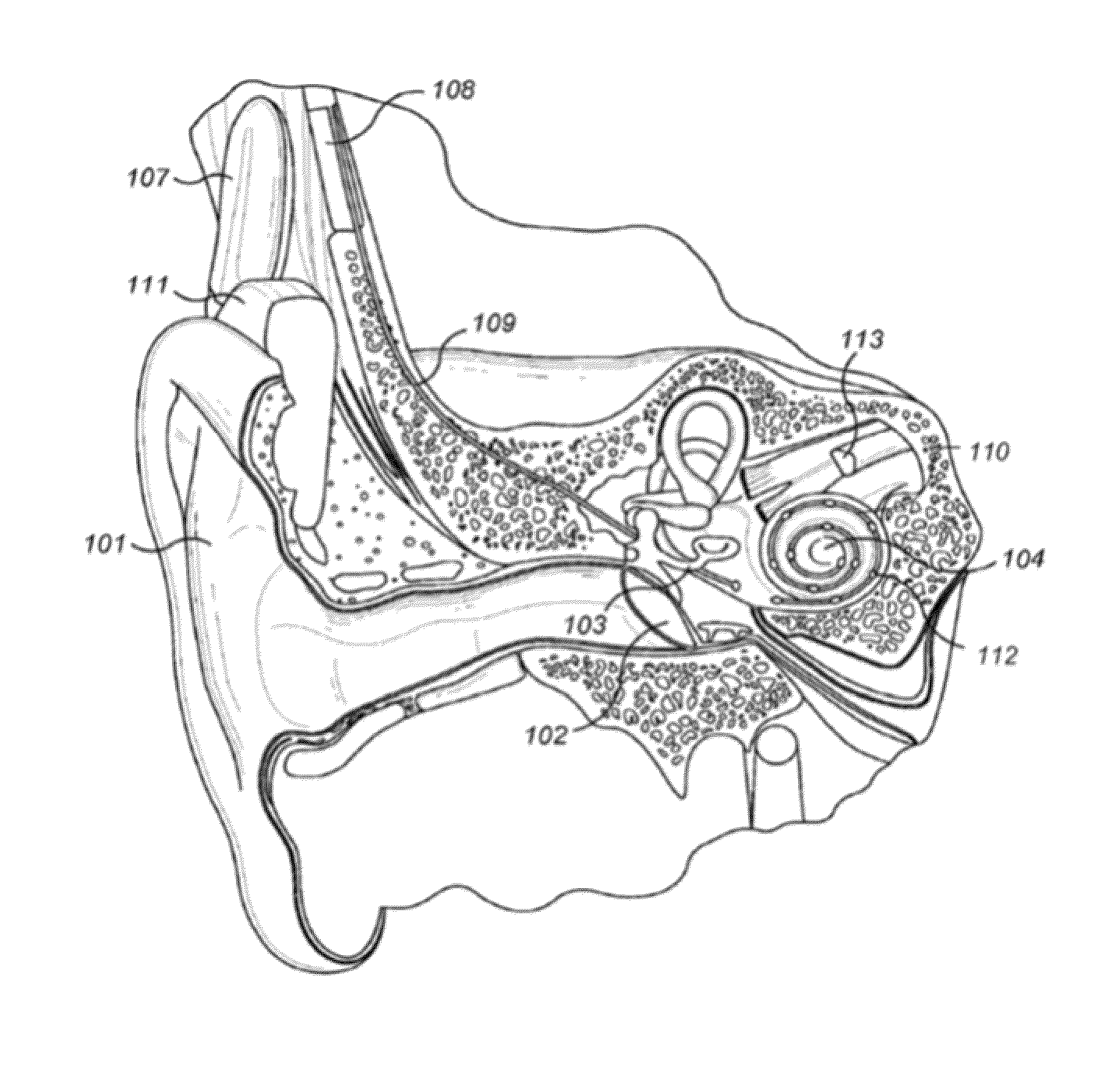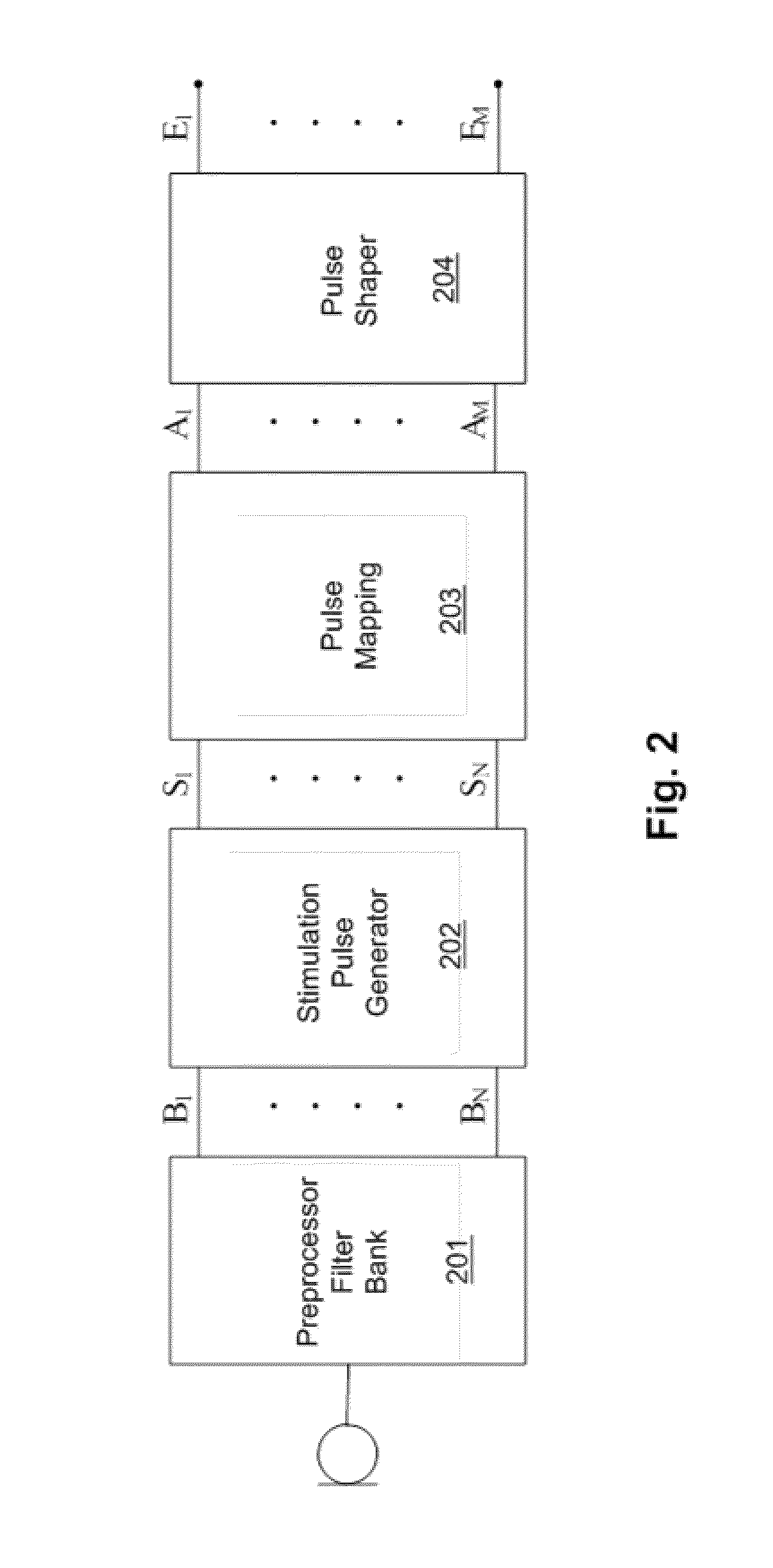Automatic Selection of Reduction or Enhancement of Transient Sounds
a technology of transient sound and automatic selection, applied in the field of hearing implant systems, can solve the problems of short phase duration, limited current amplitude, and background noise that reduces speech intelligibility of hearing aids, and achieve the effect of reducing distortion
- Summary
- Abstract
- Description
- Claims
- Application Information
AI Technical Summary
Benefits of technology
Problems solved by technology
Method used
Image
Examples
Embodiment Construction
[0056]In illustrative embodiments, a system and methodology is provided that is directed to improving hearing comfort and speech intelligibility in users of hearing aids or hearing implants, such as cochlear implants. More particularly, in various embodiments a detector of transient sounds may automatically characterize transients as noise or as a speech feature. The automatic assignment of transient features advantageously allows for a reduction of unpleasant transient noise such as dish clattering, paper rustling, or door slamming, and the enhancement of desirable sound features such as speech or music onsets. This may lead to an increase of the speech intelligibility and the hearing comfort of hearing implant users. Details are discussed below.
[0057]FIG. 3(a) shows an exemplary input sound signal that includes both noise and speech; while FIG. 3(b) shows its associated spectrogram. The input sound signal includes speech, babble noise, and two transient noise sounds due to dish cl...
PUM
 Login to View More
Login to View More Abstract
Description
Claims
Application Information
 Login to View More
Login to View More - R&D
- Intellectual Property
- Life Sciences
- Materials
- Tech Scout
- Unparalleled Data Quality
- Higher Quality Content
- 60% Fewer Hallucinations
Browse by: Latest US Patents, China's latest patents, Technical Efficacy Thesaurus, Application Domain, Technology Topic, Popular Technical Reports.
© 2025 PatSnap. All rights reserved.Legal|Privacy policy|Modern Slavery Act Transparency Statement|Sitemap|About US| Contact US: help@patsnap.com



